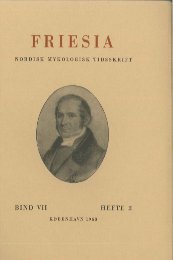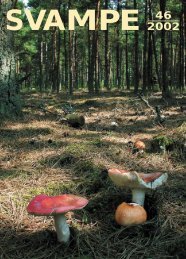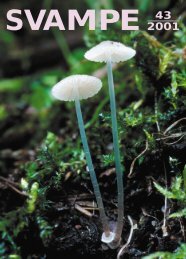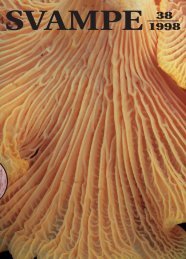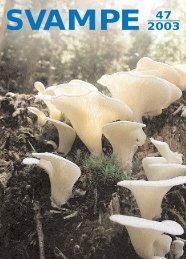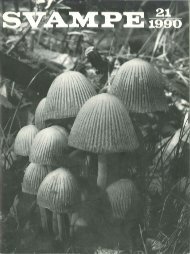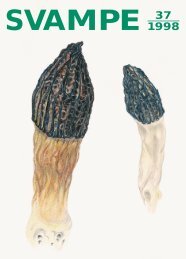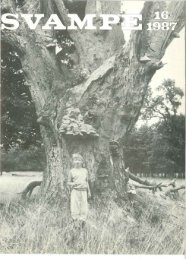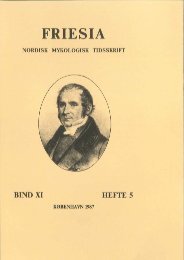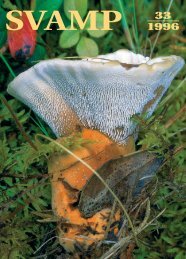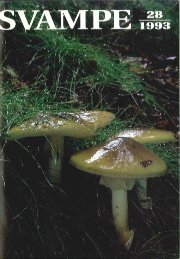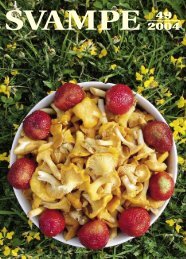Create successful ePaper yourself
Turn your PDF publications into a flip-book with our unique Google optimized e-Paper software.
-78 -<br />
the apical septum of the prophialide is formed. Simultaneously the<br />
falx starts being smoked as a first sign of maturing, and finally a<br />
single conidium develops on each phialide. This whole evolution<br />
from the starting outgrowth on the side of the hypha till the develop<br />
ment of the conidia, covers a period of a little more than 24 hours<br />
at room temperature.<br />
A culture of t he isolate has been sent to Centraalbureau voo r<br />
Schimmelcultures, Baarn.<br />
10. Peronospora dianthicola Barthelet(?) On September<br />
15, 1949 Mr . F r . J e n s e n, gar derier in Havndal, J utland, sent me<br />
a number of young diseased see dlings of D i ant hus caryophylZus f l. pl.<br />
Triumph. The plants were heavily infected by a Peronos por a species.<br />
This fungus genus has so far no t been observed on D i ant hus<br />
in Denmark.<br />
Th e patches we re found mainly on the underside of the leaves,<br />
and they were violet to brownish gray. The conidiophores were 4-6<br />
t ime s dichotomously branched, 250- 380 p in length (10 measuremen<br />
ts : 315 p ), and ab. 7-11p in breadth. The conidia were 15-24<br />
by 12.8-16.5 p (25 measurements: 19.7 by 14.7 p). Oospores were<br />
not found.<br />
Among a number of Peronospor a species deseribed from Caryo<br />
phy llaceae two species have been recorded from sp ecies of D ianthus:<br />
Peronospora diant hi de Bary (type host: Tuni ca protdera, syn .<br />
D ianthus prolifer) , and Peronospora dianthicola Barthelet (type<br />
host: Dianthus caryophyZlus fl. pl.).<br />
G a u m a n n (1923) limited the first species to inelude only<br />
the Peronospora on Tunica proliiera, and he set up P. agrostem<br />
matis Gåum. for t he A grostemma form of D e B a r y's species.<br />
Unfortunately, no measurements are given in the original diagnosis<br />
of D e B a r y (1863, 1864), but, on the other hand, when the great<br />
variation in the Peronospora species on Caryophyllaceae is taken<br />
into consideration, there is no particular reason to assume that the<br />
Danish Peronospora on Dianthus caryophylZus be identical with just<br />
the Peronospora form recorded by D e B a r y on Tunica. P. di an<br />
thicola, recently set up by B a r t h e l e t (1946), has conidiophores<br />
of 280-300p in length, conidia measuring 23.8 by 17.8p, and<br />
oospores measuring ab. 39 Jl in diameter.<br />
The conidia of my Peronospora material are thus considerably<br />
smaller as far as the average size is concerned than those mentioned



